There’s one thing that matters to automotive marketers: selling more cars. But that’s easier said than done.
While many industries rely on repeat purchases, growth isn’t that simple for auto brands. People aren’t looking to make a car purchase several times a year.
In order to grow, you need to reach more prospective car buyers. In this article, we’re going to dive into five practical lead generation approaches you can use to shift more cars from your dealership client’s lots.
1. Improve the Conversion Rate of The Dealership’s Website
A good looking, well-designed website provides your dealer clients with credibility. Looks are important, but only to serve the function of your website.
That function is to generate car sales leads. If their website isn’t successfully building brand awareness or filling your pipeline, then you can help them to rethink its purpose.
In order to bring potential car buyers into car dealerships, the website must do the following:
- Communicate your value proposition: What makes you different from the competition? Your value proposition must clearly state how you provide customers with what they need.
- Build social proof: Testimonials and endorsements back your value proposition up. Include Google Reviews on your home and product pages. Ask customers for testimonials to build a personal connection with website visitors.
- Educate: What reassurance do your customers need in order to make a buying decision? Create a blog as a portal for this information. More on this shortly.
- Deals and offers: Give your promotions a dedicated place on your website to attract hot buyers. Include inventory data to communicate the limited nature of the deal.
- Calls-to-action: What must visitors do next? Give them a specific action in order to take the relationship further.
Not all calls-to-action are made equally. Someone currently researching and comparing models may need more information before they’re ready to buy. If you can provide high-quality car leads with additional information, they’re more likely to buy from you.
Why? Because you’ve built trust upfront. This is where having informative and compelling copy comes in. For example, Austin INFINITI provide educational content on why customers should consider financing their next purchase:
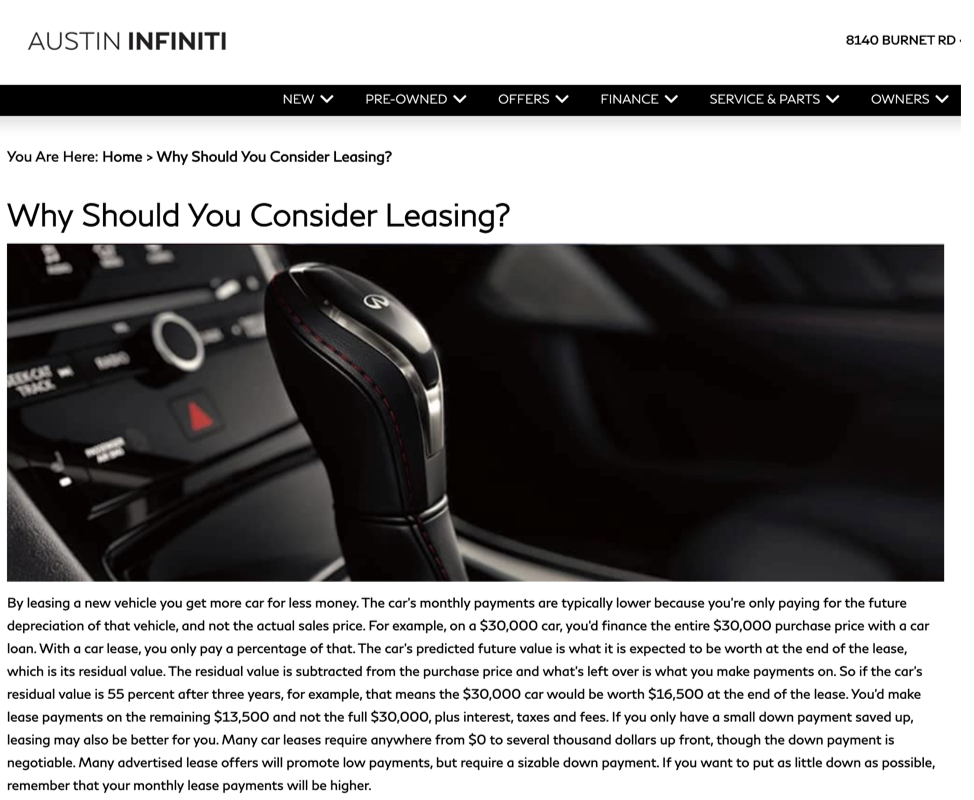
They’ve even built a payment calculator, which shows car buyers accurate repayment costs based on interest rates:
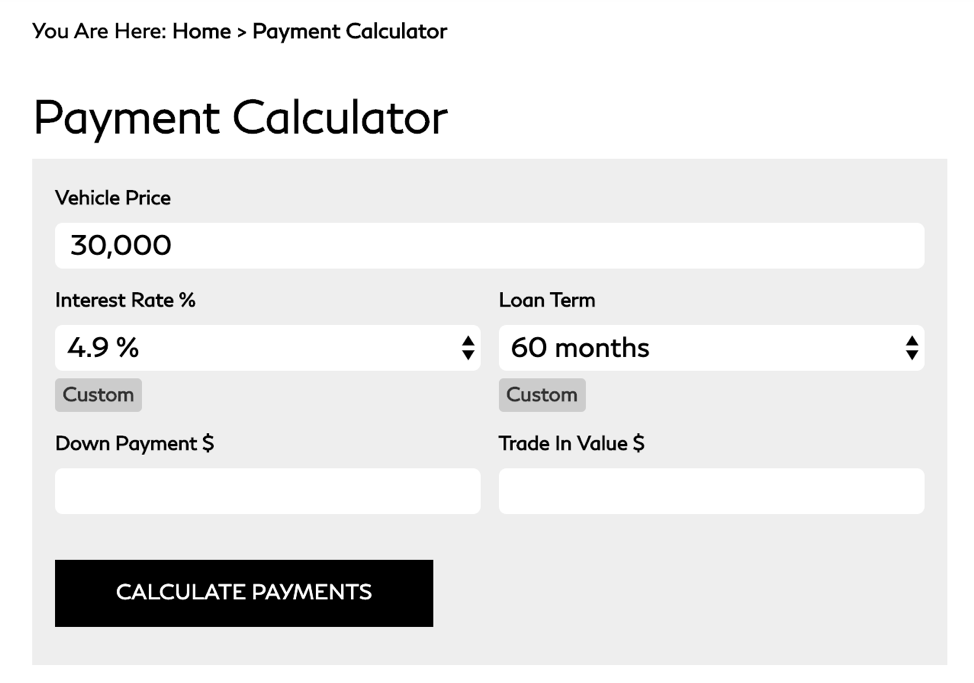
Give potential customers the tools and information they need to make the right decision. Another way you can build trust is through testimonials. Dedicate an entire page to reviews and customer quotes, just like Gillis Auto Center has done here:
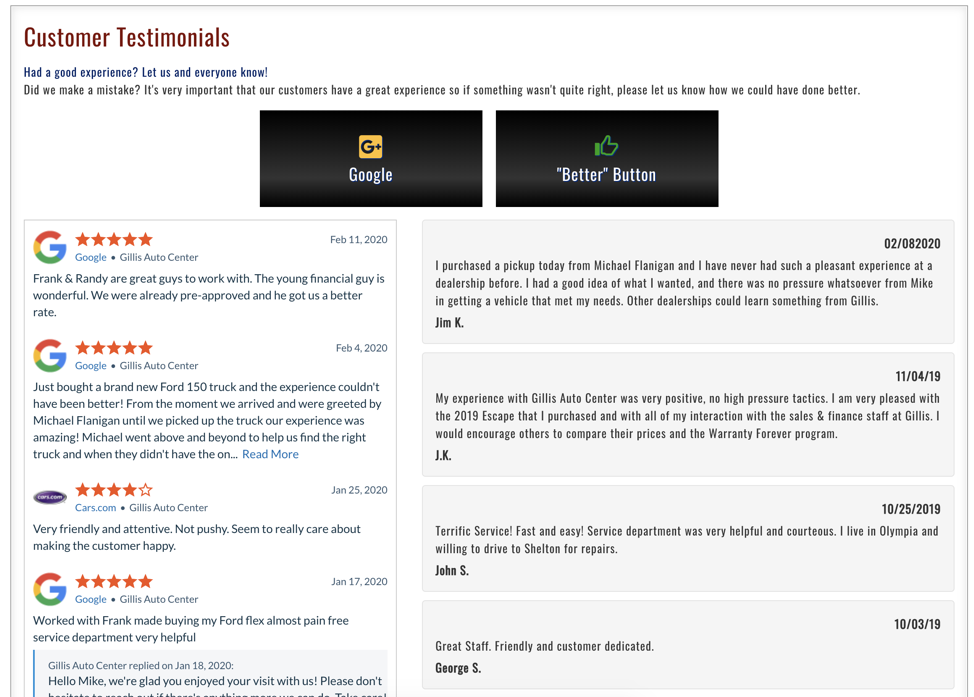
In short: your website must provide buyers with everything they need to make the right decision. Not only will this help empower them, but it will position you and your brand as a trusted source they can rely on to answer questions.
Hot Agency Tip: Create a checklist you can use when auditing client websites. Make sure it’s designed for conversions. A balance between design and function must be maintained.
2. Partner Your Auto Dealership With Local Brands
With the foundation of your lead generation process taken care of, it’s time to attract new car buyers.
Advertising is a tried-and-tested approach, and while we’ll cover how to automate your campaigns shortly, there are other ways to expand your target audience. Namely, by partnering with those who have access to them.
This is where traditional business development comes in. By partnering with other brands in your market, you can establish mutually-beneficial relationships that help you both grow.
You should have a clear understanding of who your target customer is. Their demographics, what their interests are and what keeps them up at night. This is critical when identifying potential partners with access to these customers.
Think about their buying habits. For example, your ideal customer might be:
- Someone who is budget-conscious, and buys used cars from a reliable brand
- Newly-wed couples looking for a new car for their family, or
- High-income individuals looking for luxury vehicles
Understanding these needs will allow you to reverse engineer who your potential partners are. For example, if you’re targeting luxury buyers, identify partners who sell other luxury goods. These may include local jewellers, gourmet foods and niche real estate markets.
You’re likely familiar with the top brands in your region and local space. To cover all bases, search Google for terms like “jewellers houston” to find potential partners:
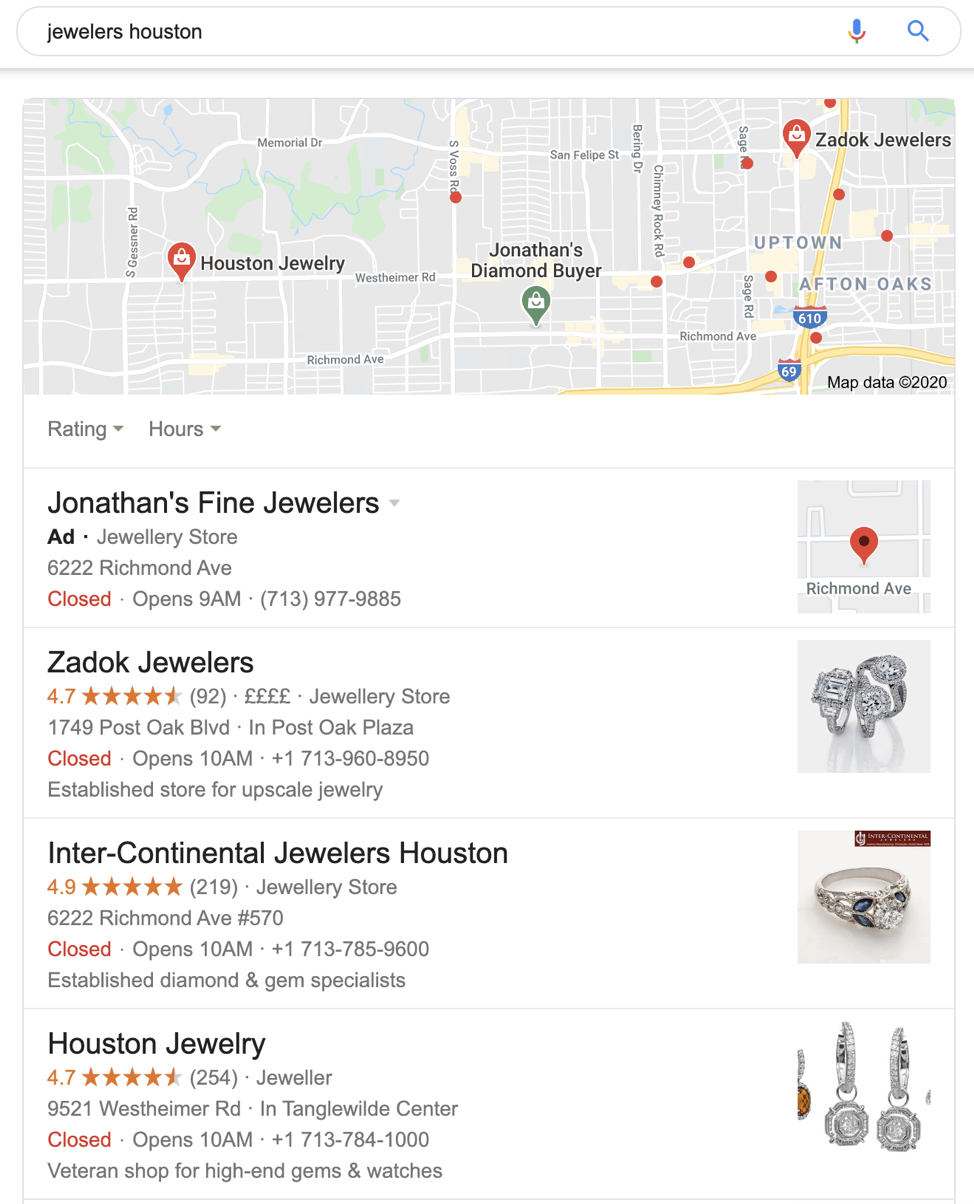
Make a list of potential partners in a spreadsheet. Use LinkedIn to identify the owner or person in charge of marketing. To find their email address, you can use a tool like Hunter:
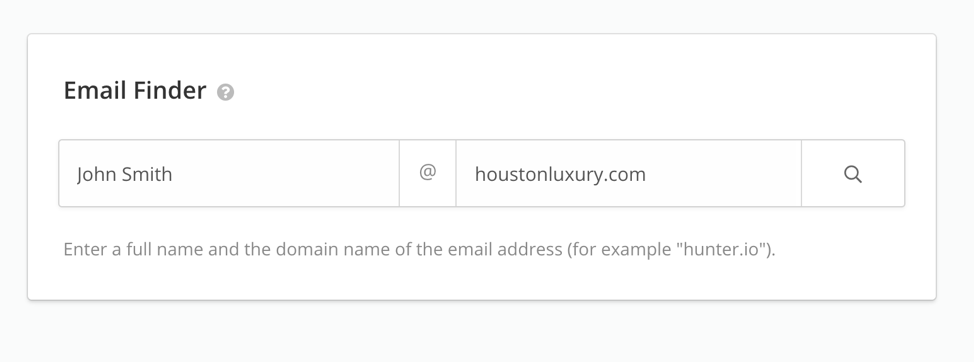
Make sure to include the following information in your email outreach:
- Personalized opener: The first line of your email must act as a hook. Here, give a personalized or timely reason for reaching out. For example, a promotion they’re running that caught your attention.
- Why you’re reaching out: Get to the point. Why are you reaching out? In this case, it’s to establish a mutually-beneficial partnership.
- The benefits: Why should they pay attention? Why would a partnership benefit them? Use this as an opportunity to mention assets, such as audience size (email list, social media followers etc.) to get their attention.
- Call-to-action: What are the next steps? Typically, this is simply a quick call to explore this further.
The next step is to negotiate the terms of a partnership. For example, who is in charge of which activity? Here are some partnership examples to get you started:
- Joint promotions: Both partners promote an exclusive offer to their respective customers
- Content creation: One or both brands creates and promotes content for the other
- Events: Run joint events with one or several partners to engage your collective audiences
These are just a few ideas. Choose an arrangement that fits your lead generation goals, making sure there are clear benefits for your partners.
Hot Agency Tip: Tapping into your existing relationships is one of the biggest value-adds you can bring to clients. Not only that, but it will also contribute to faster organic growth.
3. Scale Your Automotive Advertising Efforts
The competitive landscape for automotive advertising is fierce. According to Statista, ad spend in the U.S. automotive sector is expected to grow to about $5.3 billion by 2021.
This, coupled with rising PPC costs and the increasing use of ad blockers, means paid media has become harder to manage. To scale effectively (while maintaining a positive ROI), a different approach is required.
If you’re managing your paid media efforts by logging into Google Ads, Facebook Ads and various other platforms on a daily basis, there’s a better way.
Start by bringing your ad account management into one place. This way, you can manage and segment all your ad data, while monitoring your most important KPIs:
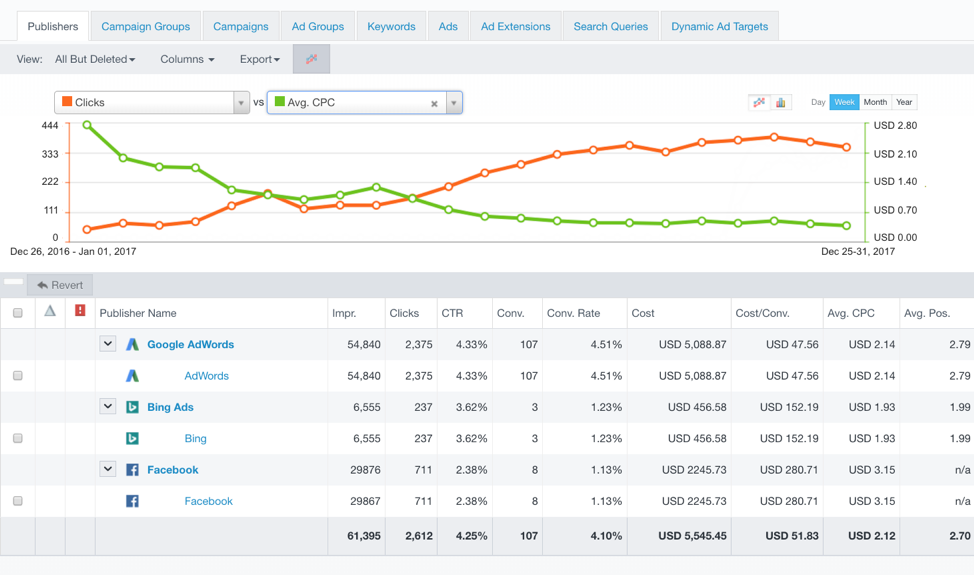
As you can see above, this gives you a birds-eye view of all accounts, while allowing you to dig deeper into individual campaigns, ad groups etc.
With all data in one place, the next step is to automate as much of the process as possible. The most common daily/weekly ad management tasks usually fall into these buckets:
- Launching new campaigns: Producing new ad creative around client inventory can be challenging. Dynamic campaigns can automate much of this process for you, basing ad creative generation on dealer inventory feeds.
- Managing existing campaigns: Does your ad management platform sync with your inventory management system? If stock runs out, your ad management platform must pause the relevant campaigns.
- Budget management: Monitoring your cost-per-click (CPC) and budget allocation can be time-consuming, especially when managing hundreds of cars in your inventory. Use automation featured to allocate budget where it matters most, reducing CPC while increasing conversions.
Ad management platforms, with the addition of AI technology, learn from your past successes and use them to inform better decisions. As a result, you can focus more on your digital marketing strategy while shifting more cars off the lot.
Hot Agency Tip: Managing several auto clients is even more time-consuming. Invest in a centralized campaign management & reporting platform that brings all client data into one place, deploy innovative strategies and optimize campaigns across all client accounts.
4. Build Your Inbound Marketing Engine
Paid media allows you to generate highly-targeted traffic quickly. When using the principles above, you can turn that traffic into customers with a positive ROI.
But many dealers overlook the power of organic channels. Establishing a search engine optimization (SEO) strategy can supplement your paid media efforts with organic traffic that grows over time.
For example, when searching for “used cars austin,” we first see the paid listings:
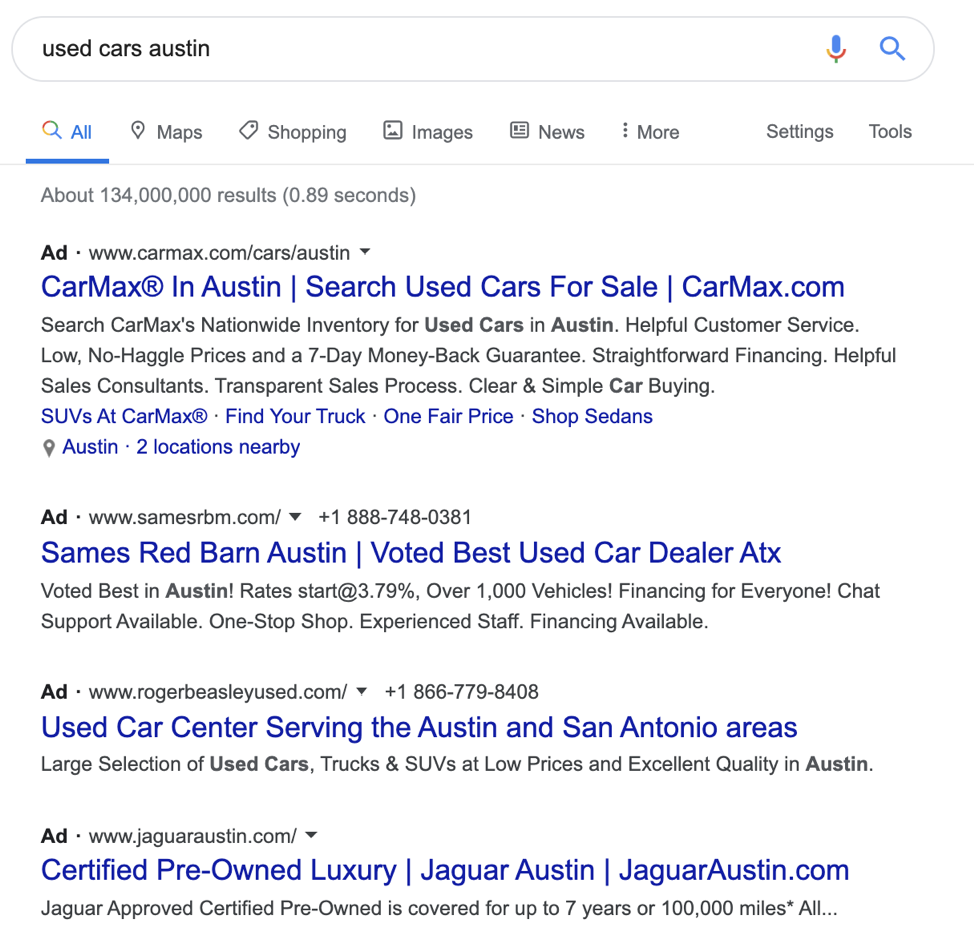
Followed by organic and Maps results:
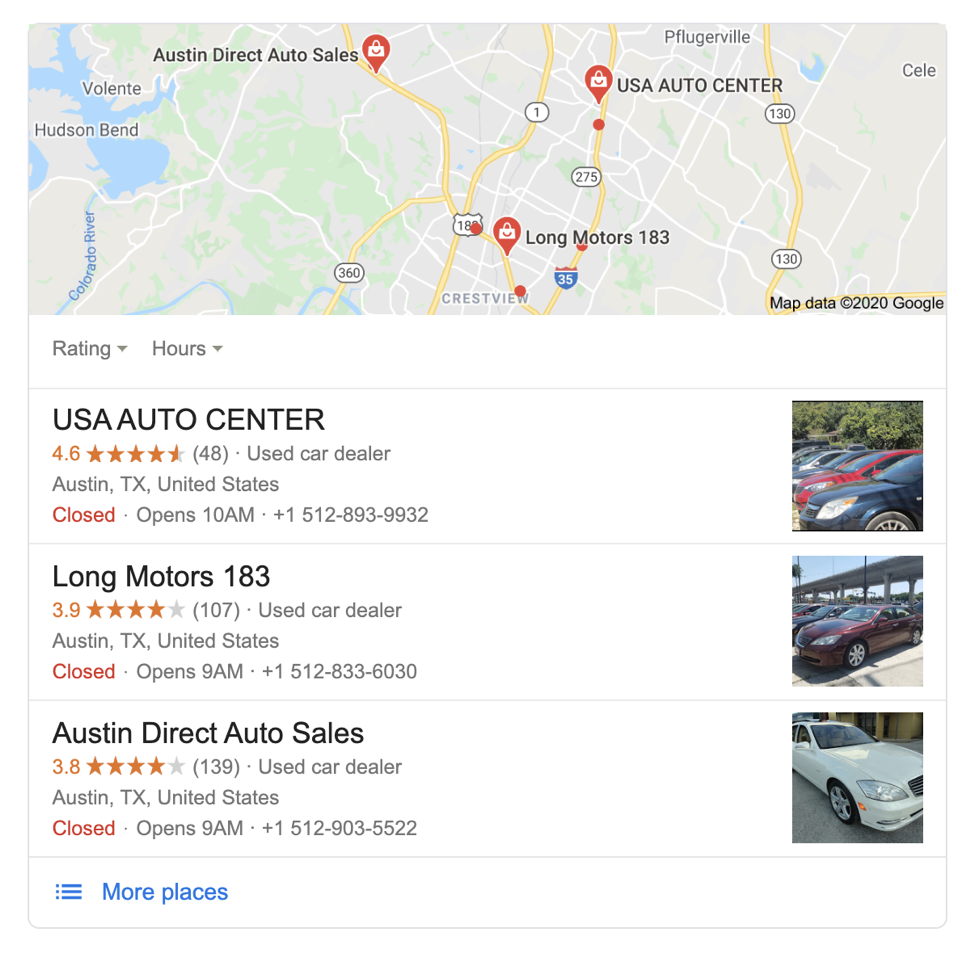
If you’re focusing solely on paid media, you’re leaving plenty of traffic and potential customers on the table.
First, make sure your Google My Business (GMB) account is set up correctly. This means ensuring your NAP (name, address and phone number) is correct, and you’ve chosen an appropriate category.
Next, you’ll need to optimize your GMB listing. To do this, include the following:
- Photos: Include photos of your new and used cars. The more users engage with your photos, the higher Google is likely to rank you:
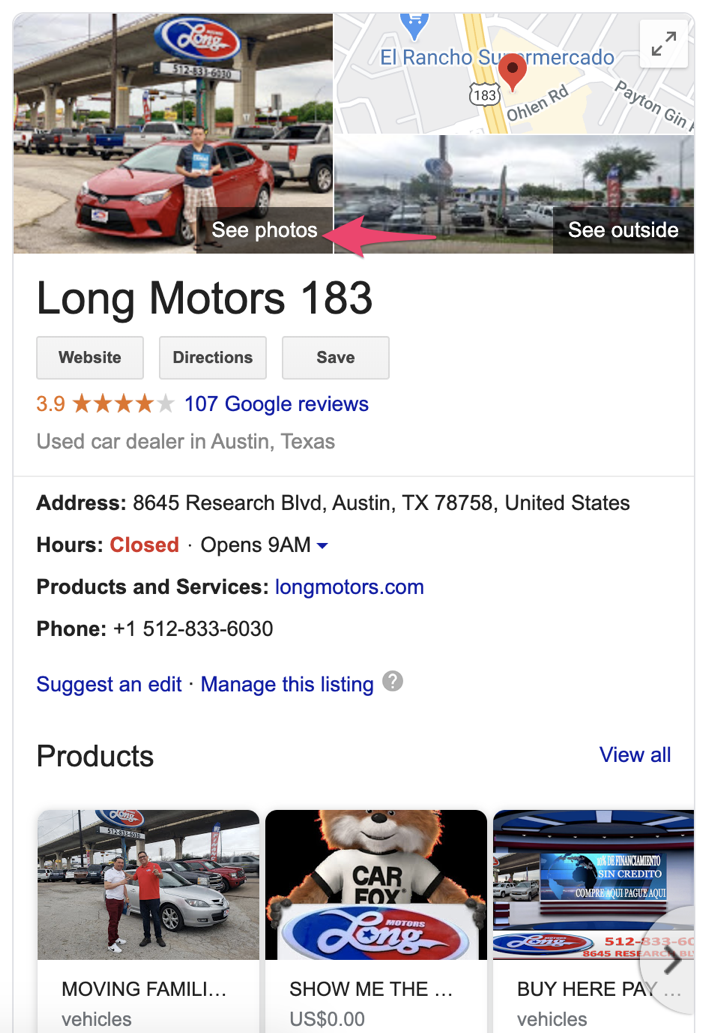
- Reviews: Encourage salespeople to ask customers for a review. Positive reviews are a good sign in Google’s eyes. Most importantly, it shows potential customers you can be trusted.
To learn more about setting up and optimizing your GMB page, check out this in-depth guide from Web.com.
You should also identify keywords your audience are searching for. This includes those with commercial intent as well as informational searches:
- Commercial intent keywords include terms like “buy used car san francisco”
- Informational keywords include “how to get a used car on finance”
Use a tool like the Google Keyword Planner to identify additional keywords. Make a plan to create content and product pages that attracts those searchers:
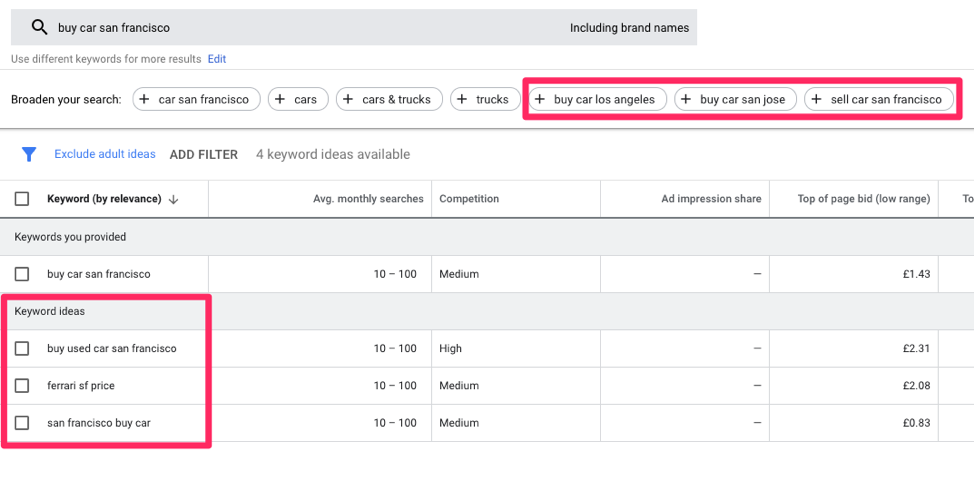
Segment target keywords accordingly. Optimize keywords with high purchase intent. For example, someone searching “buy used ford cars” will want to see all models available, so make sure you have a category page that lists all Ford models available.
We’re covering the basics here, which should give you enough to get started. Kagool has more information on automotive SEO strategy, which you can read here.
Agencies: Invest in a comprehensive SEO tool to identify highly-relevant keywords for your clients. Create a robust SEO and content plan that helps them increase organic traffic over time, educating their customers in the process.
5. Use Outbound Channels to Generate Car Sales
While inbound marketing takes time to get results, there are other ways you can fill your sales pipeline (besides paid media).
Outbound channels allow you to take control of your lead generation efforts by reaching potential buyers directly. Let’s start with direct mail.
You might think that direct mail is an outdated approach. But with everyone’s attention on digital channels, the physical mailbox is less cluttered than ever.
To get the attention of your recipients, follow these five rules:
- Get straight to the point: Many dealerships opt for plain text letters rather than postcards with flashy imagery. If you choose this route, state why you’re reaching out in the first paragraph.
- Focus on your brand: Let your brand personality shine throughout the copy. Tie your brand mission to the benefits and the offer you’re presenting potential buyers with.
- Get personal: Avoid using official-sounding, corporate speak. Speak to your customers like humans, using a conversational tone to connect with them.
- Break up the copy: Utilize white space, and break paragraphs up into two to three sentences. List features and benefits in bullet points. This makes your direct mail much easier to skim and consume.
- The call-to-action: What should the lead do next? Should they call a number, visit a landing page or walk into your dealership? Whatever you want them to do, make sure it’s clear.
The same rules apply to cold email. If you have a list of warm leads (who have given you permission to reach out to them), use the principles above to get their attention.
With email, it’s wise to create follow-up messages. These are effective if your promotion is for a limited time, and allows you to send last minute messages to remind them before it’s over.
Conclusion
Automotive growth is all about keeping a healthy pipeline of new potential buyers. In order to do this, you must have a well-oiled lead generation system.
The five approaches listed in this guide are fundamental. Inbound leads will help you generate organic traffic over time, while paid media and outbound channels will fill your pipeline, fast.
No matter the channel, provide leads with the information they need to make the right decision. Understand their pains, and show them how you can alleviate them.
Images:
Featured image: Unsplash / Marc Kleen
Image 1 and 2: Austin INFINITI
Image 3: Gillis Auto Center
Image 4, 7, 8, 9, 10: Google
Image 5: Hunter
Image 6: Acquisio



